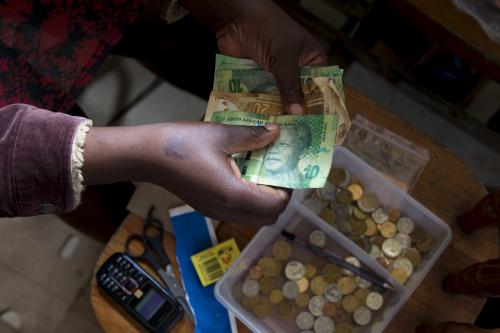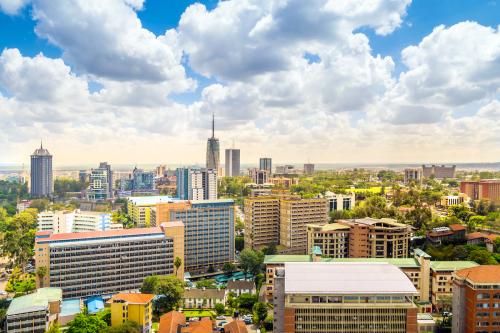In late March, the United Nations Economic Commission for Africa (UNECA) released its annual Economic Report on Africa. The 2019 report, “Fiscal Policy for Financing Sustainable Development in Africa,” focuses on various aspects of fiscal policy management including tax and non-tax revenues, tax administration, tax avoidance and natural resource management, and debt sustainability.
Long-term trends in resource mobilization are highlighted in chapter 2 of the report. As Figure 2.2 shows, total government revenues peaked in 2008 just above 30 percent of GDP. Since 2012, revenues in oil-exporting countries have declined sharply, reflecting the decline in commodity prices, and are now lower than the regional average. Narrowing our focus to tax revenues, the continental picture remains challenging with the weighted tax to GDP ratio peaking at 19.9 percent in 2005. In 2018, weighted tax revenues were 14.6 percent of GDP. However, there has been significant progress at the country level with 12 countries now having tax revenues above 15 percent of GDP, up from just three countries in 2000.
Source: Economic Report on Africa 2019: Fiscal Policy for Financing Sustainable Development in Africa. UNECA.
The report also estimates the tax gap for value-added taxes (VAT), the difference between potential and actual revenues, for a number of countries in Africa. As Figure 3.4 shows, of the 24 countries where there is data, the gap is more than 50 percent in half the countries. The tax gap includes both policy and compliance gaps such as a large number of exemptions and an inability to adequately enforce tax laws in the country. According to the report, in Nigeria, doubling the VAT rate from its current low of 5 percent and addressing compliance gaps could double VAT revenues from 0.8 to 1.6 percent of GDP.
Source: Economic Report on Africa 2019: Fiscal Policy for Financing Sustainable Development in Africa. UNECA.
The report provides several recommendations on improving tax revenue mobilization. Expanding the tax base will be important given the low starting point. To this end, efforts to include agriculture and the informal economy in the tax system can help. Further, countries should continue efforts to increase the tax base for payroll and workforce taxes. Reducing exemptions and waivers across various taxes will help improve collection. Increasing the use of information and communications technology tools such as online tax filing systems can help speed up the process and reduce opportunities for collection interference.
For more on the scope to raise tax revenues above current levels by further strengthening tax capacity and improving governance in revenue collection in Africa, see our recent report, “Mobilization of tax revenues in Africa: State of play and policy options.”








Commentary
Figures of the week: Domestic revenue mobilization in Africa
May 16, 2019